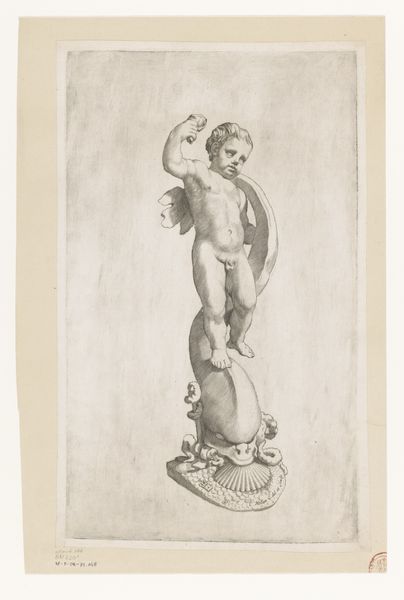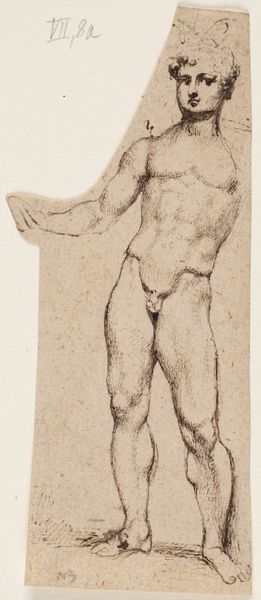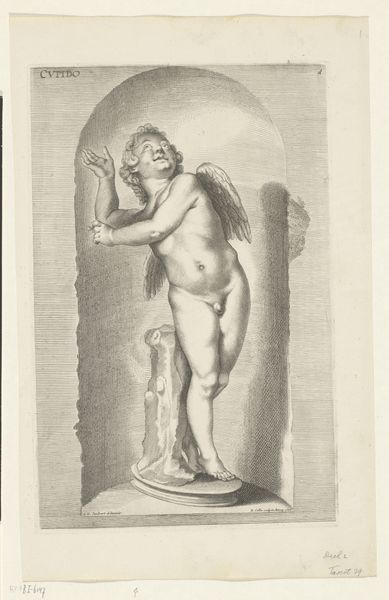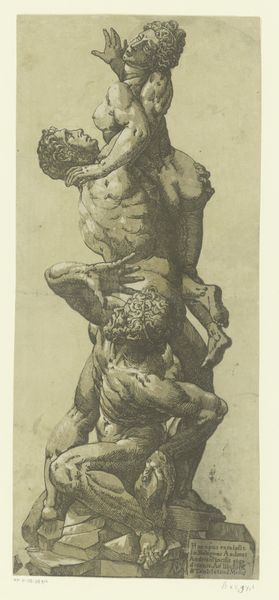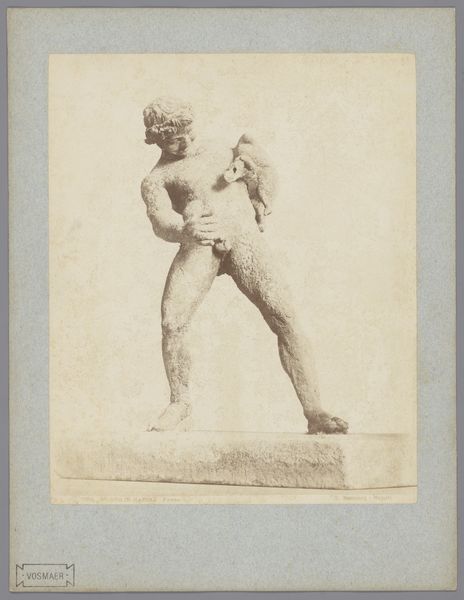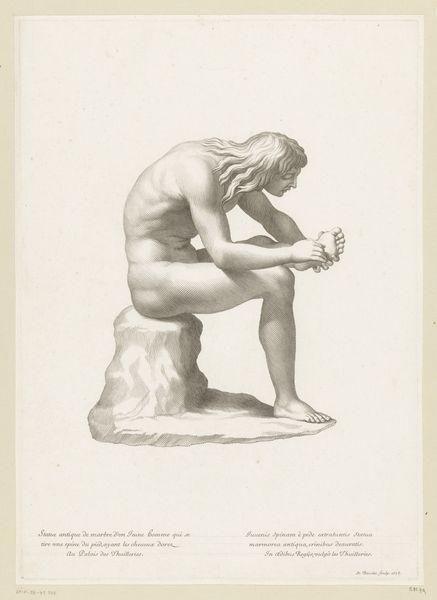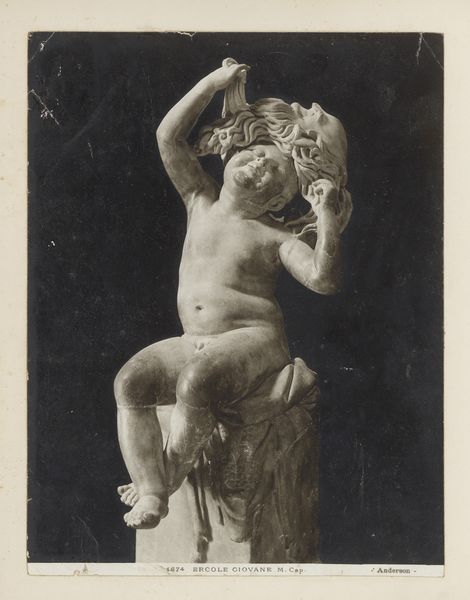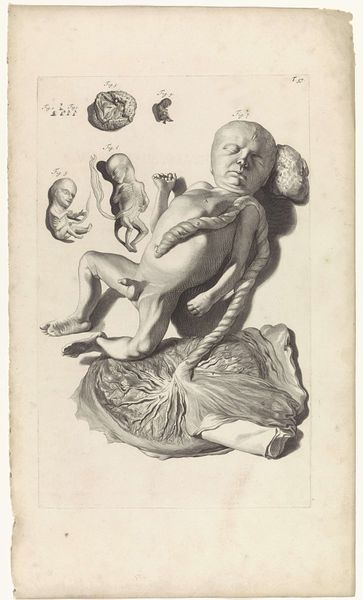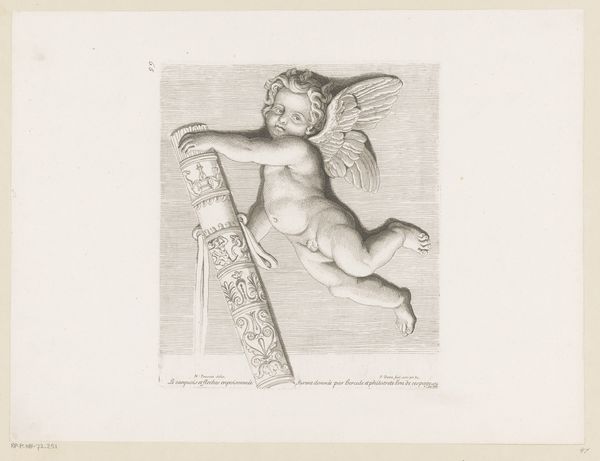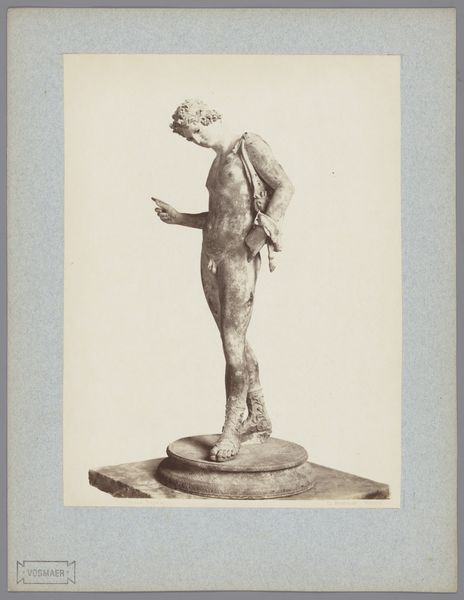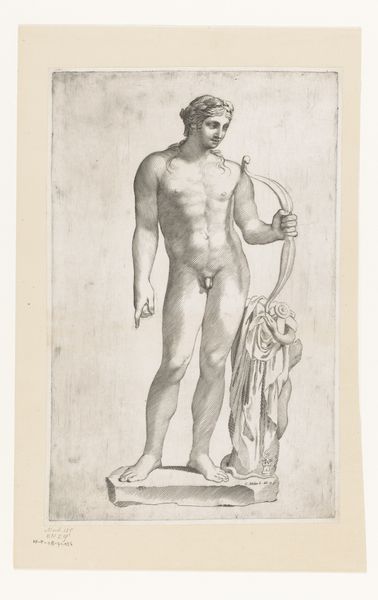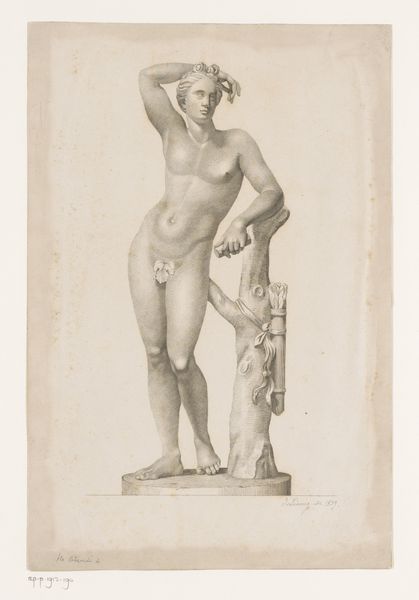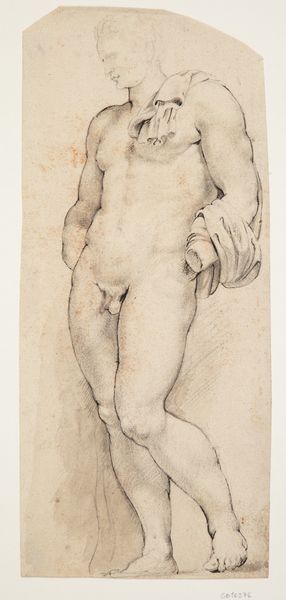
drawing
#
portrait
#
drawing
#
figuration
Dimensions: overall: 41.8 x 30 cm (16 7/16 x 11 13/16 in.)
Copyright: National Gallery of Art: CC0 1.0
Curator: Oh, my. What an endearing sentinel! It's a drawing from around 1941 entitled "Ship's Figurehead." Editor: It feels weighty, almost like it could tumble right off the paper. Those raised hands—it looks caught between defiance and supplication. Is it ink or charcoal? Curator: Actually, neither. It’s a drawing rendered with graphite and watercolor. You know, figureheads are typically placed at the bow of a ship. Can you imagine her bravely leading the vessel through treacherous waters? Editor: Graphite and watercolor lend it an interesting texture. See how the graphite captures a real wood grain? It's trying to be that carved wooden figure while trapped on paper. The real material process contrasts so interestingly with the delicate representation of wood through watercolor and pencil. Do we know where this figurehead would’ve been placed? Was it part of a ship that sailed during the war, maybe? Curator: Sadly, there are no records available about the artist or its use on a ship, only that it was a sketch produced by Alice Cosgrove in around 1941. However, I like how you focus on materiality here, the actual labor of the hand. It speaks volumes about a deeper cultural yearning during a time of conflict. It becomes, not only a protective talisman of the sea, but perhaps something more symbolically earth-bound? Editor: Yes, the weight, the heft—I keep coming back to how physical it feels despite being a drawing. What kind of statement do you think Cosgrove was hoping to express in focusing the viewer on figuration? What was her interest in the aesthetic form? Curator: The artist, by sketching her in watercolor and pencil, memorialized its likeness, ensuring its continued existence despite the physical realities of decay, perhaps? You know, when I view art, I feel deeply moved when presented with symbolic meanings in commonplace subjects. Perhaps for Alice Cosgrove, figuration allowed the audience to remember the beautiful object of art and imagination through tumultuous times? Editor: True, by drawing, painting, memorializing... but what's truly powerful here is capturing the original artist's process by utilizing her rendering style, the materiality, of graphite and watercolor to fully understand her labor. Curator: Indeed. In her dedication to rendering detail using only these mediums, she managed to turn utilitarian figure into enduring artifact. Editor: Ultimately a humble study of the artist's technique and process leads to a beautiful tribute.
Comments
No comments
Be the first to comment and join the conversation on the ultimate creative platform.
